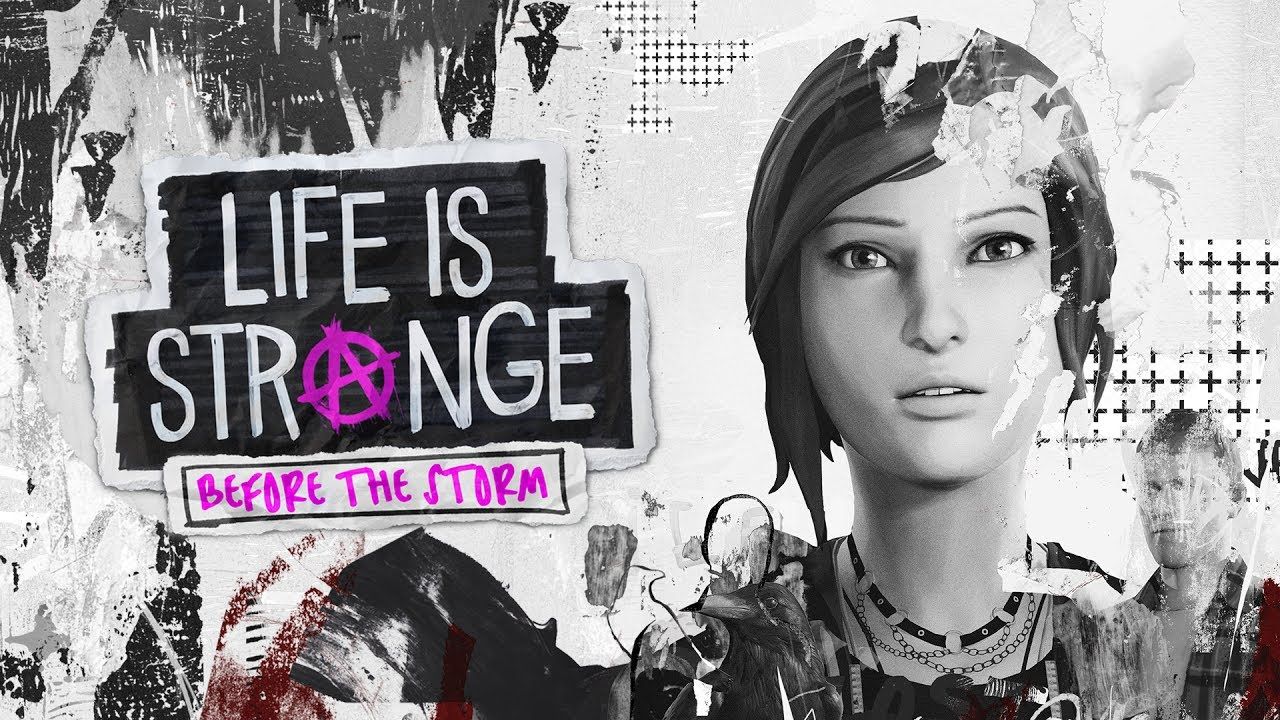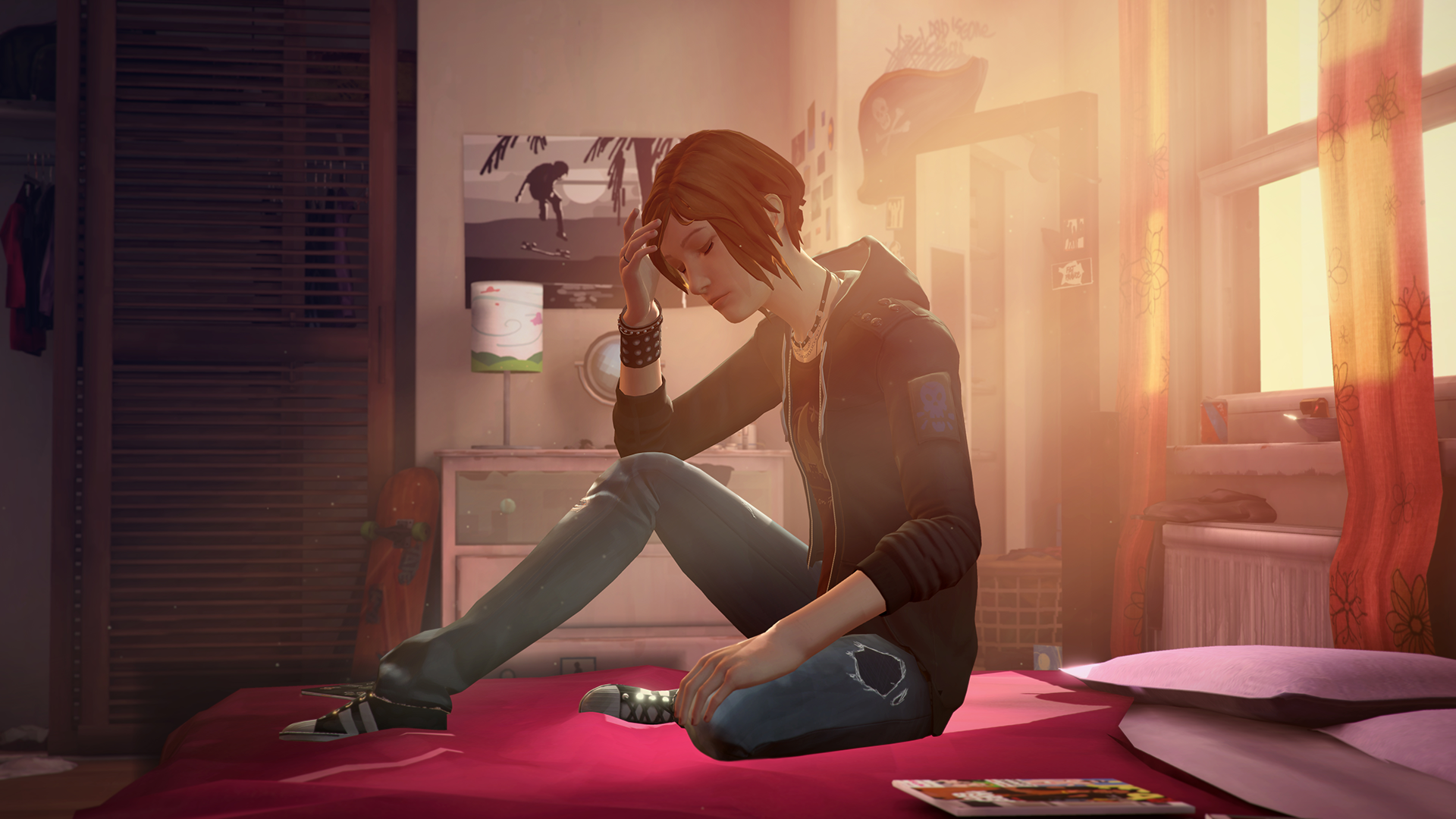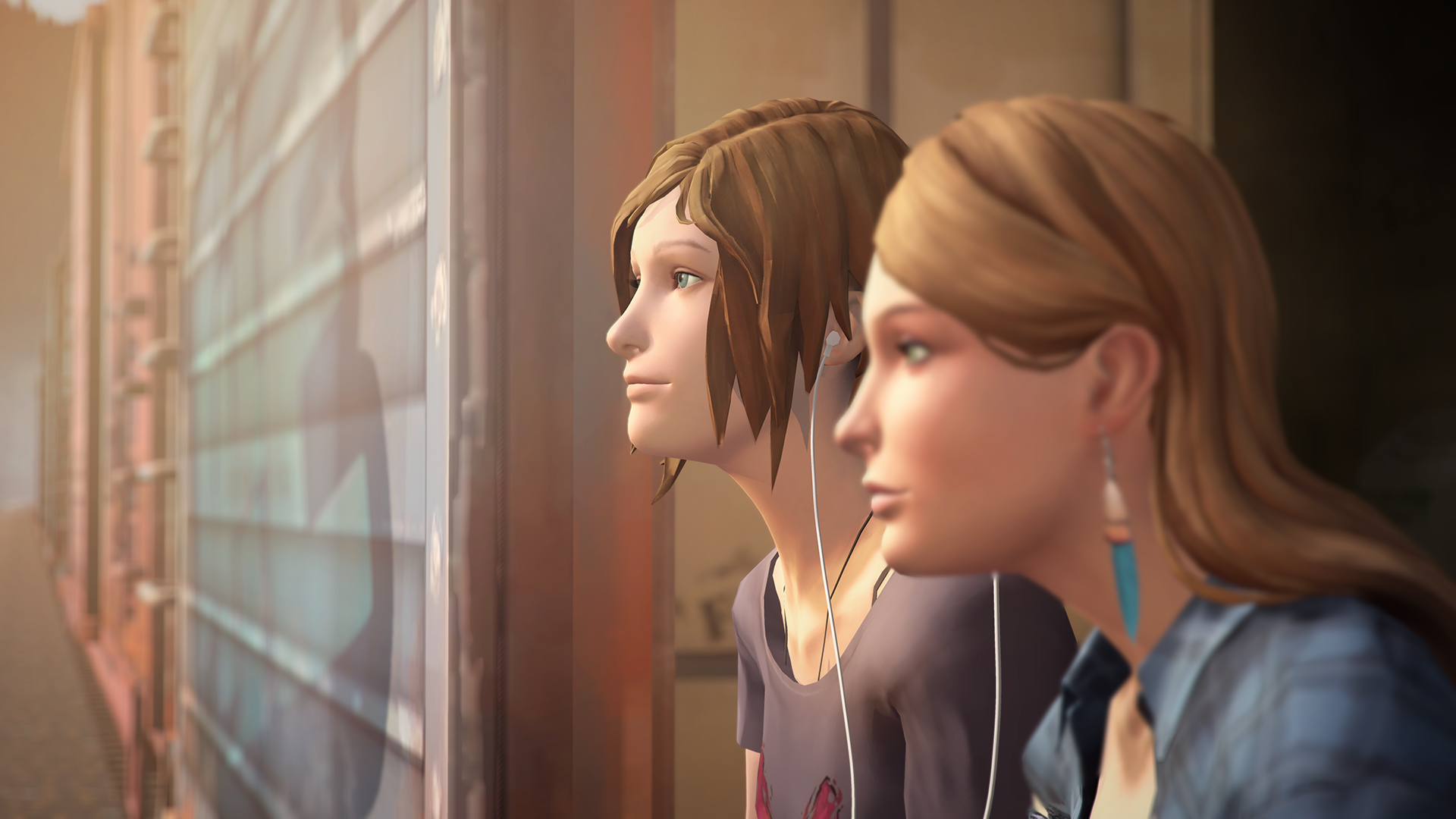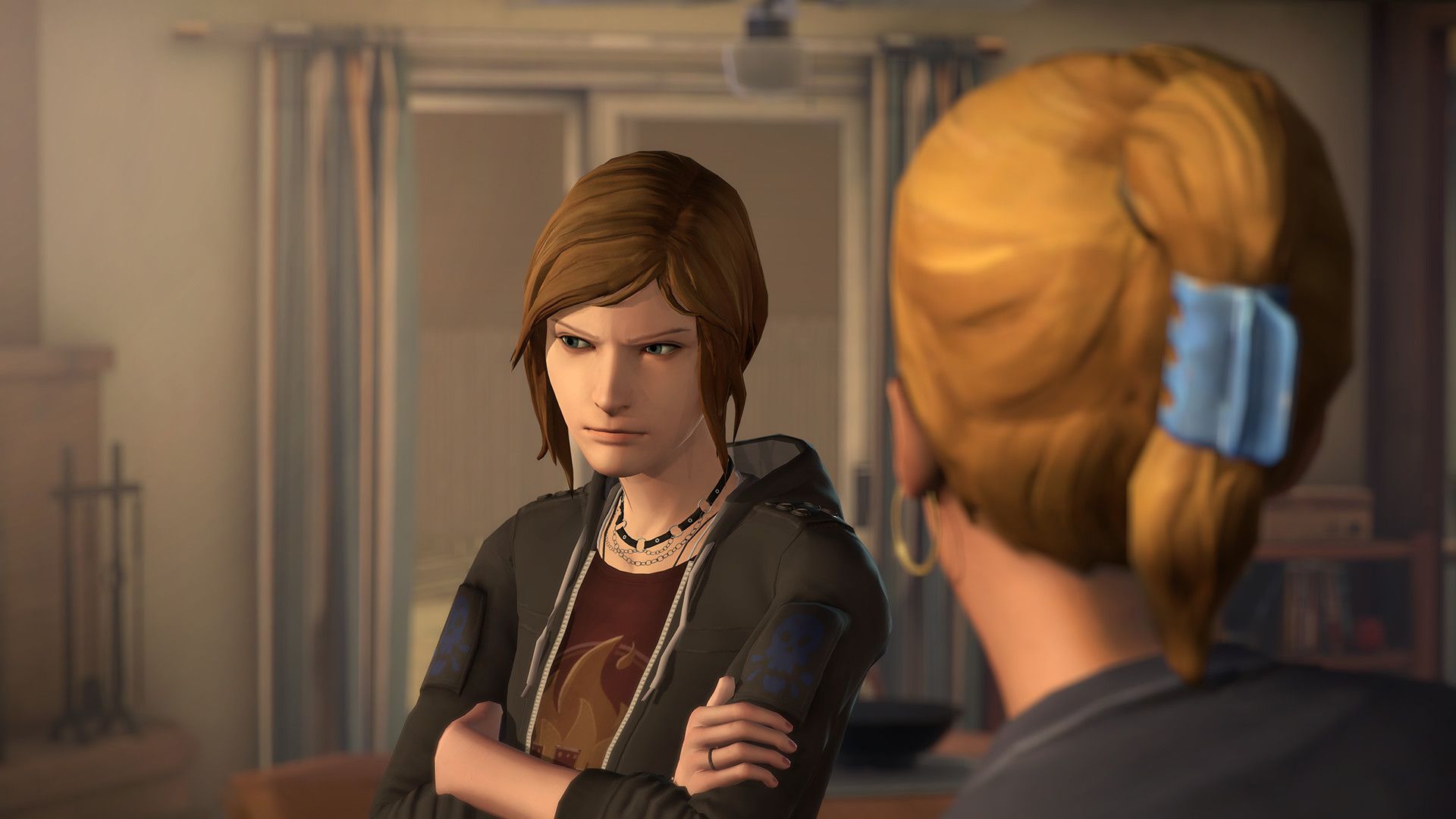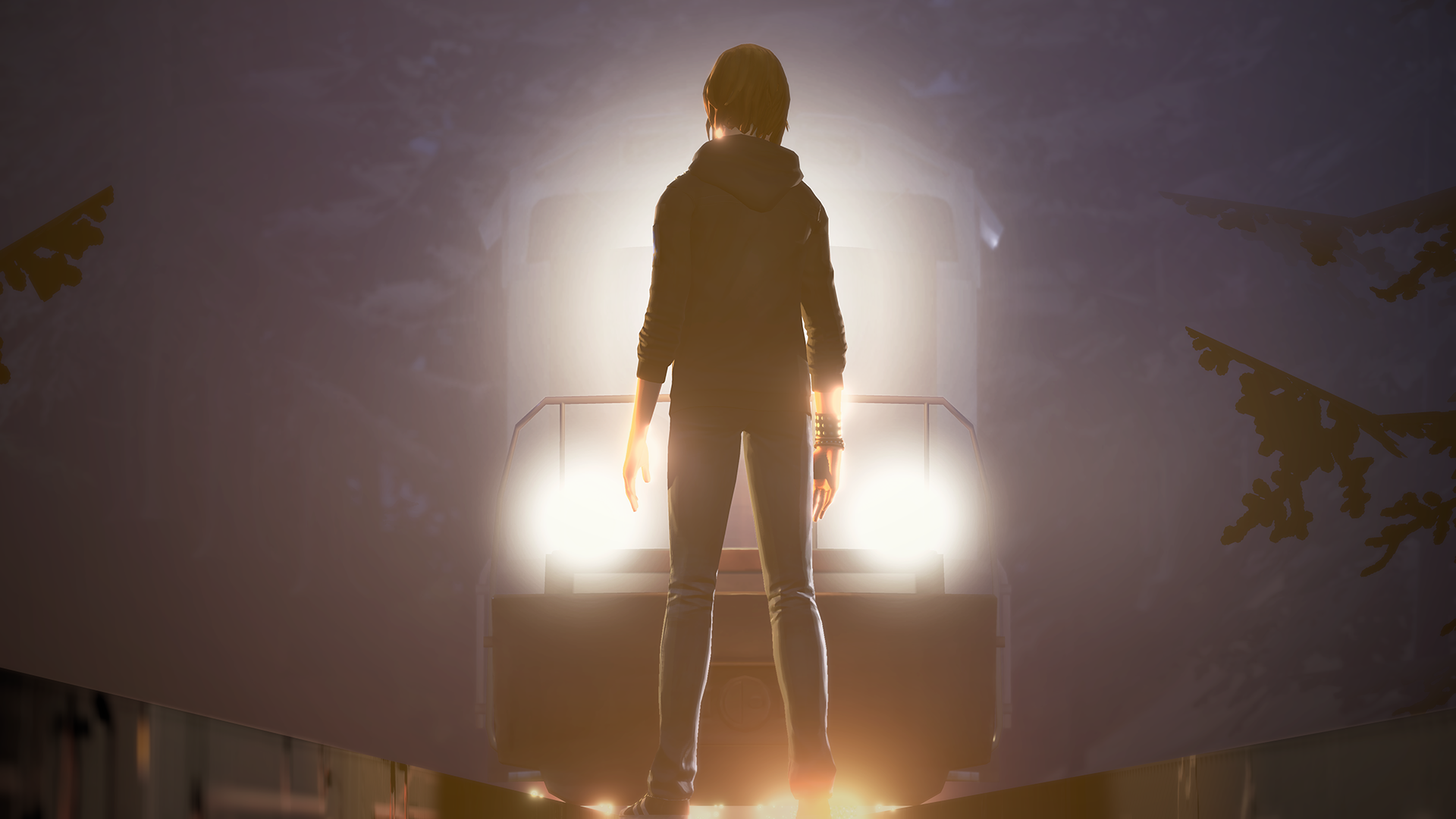In 2015, Dontnod Entertainment and Square Enix released the original Life is Strange. Deck Nine Games recently released the first episode of Life is Strange: Before the Storm, a prequel following the story of Chloe three years prior to the events of the first game.
Shortly after the launch of Before the Storm's first episode, Awake, we got to speak with Co-Game Director Chris Floyd and Lead Writer Zakariah Garriss about what it was like to make the follow-up title to Dontnod's hit adventure game.
Jordan: Did you know from the onset of Life is Strange: Before the Storm that it would be a prequel focusing on Chloe?
Chris Floyd: We had a number of decisions to make early on. One of the places we started was that we wanted to go back to Arcadia Bay, but it felt like there was no way to do a sequel without validating one of the choices at the end of the original game and thereby invalidating all of the other options. So, that’s when the prequel started to make sense and we began looking into that.
We didn’t necessarily know it was going to be about Chloe at first. To Square Enix’s credit, they really wanted [Deck Nine Games] to own the development of the story. So we talked about a lot of different characters that we would like to make a story about. Square just said, ‘tell us what story you want to tell.’
We pretty quickly started orbiting around Chloe. Of course, she’s a fan favorite, but also, a few years before the first game, she’s a really interesting character: a character who feels abandoned, by her father who has died, by her best friend who has moved away, by her mother who is sort of moving on. That felt like an interesting situation, and then we saw this relationship with Chloe and Rachel, who she talks about in a very emotional way in the first game. We wanted a strong core relationship to be at the heart of our game and that felt right.
J: Did you have a chance to consult with Dontnod Entertainment prior to or during development of Before the Storm?
Zakariah Garriss: We didn’t. From the beginning, when we were first concepting the game, all the way through to launch, it’s been the team at Deck Nine working with the core team at Square Enix. I flew to Paris in May. We had completed the alpha on the Episode One build, and I took it to Paris and met the team at Dontnod at that point and shared the game. I put the controller in their hands and they did a four-hour playthrough, passing it around the table. I talked about what we’d been doing and what we’re excited about with Before the Storm.
That was our first opportunity to really share what we were working on. It was scary, because they did something incredible with Life is Strange. All of us at Deck Nine love that game, and this was the first time we were exposing them to what we’re doing in their lovingly crafted world, and Michel Koch (one of the directors of the first Life is Strange) just said, “fans are going to love this.” It was a relief comparable only to finally releasing the game and seeing the fan response then.
So, now we’re in communication with them. We don’t collaborate. They’re working on what they’re working on, and we’re working on what we’re working on. We have Twitter relationships and when we’re at conferences we see each other and talk about what’s going on. It’s been really amazing to see their reactions to what we’re doing in Before the Storm, and to get to hear that they believe in us.
J: Was that a conscious effort on your part? Did you just not want an outside effect on what you were working on?
CF: A lot of it was just the realities of production. I mean, they’re really busy, we’re really busy. We, of course, want to know what they’re doing and they want to know what we’re doing, but that could suck up a lot of time and effort. We’re really fortunate that we’re working with a bunch of folks at Square Enix who worked with Dontnod on the original game.
They know a lot about this franchise and they care about it deeply. So, they work with us and sort of help guide us, but as I said, they also said, ‘you guys have the reins,’ because I think what they learned from the last Life is Strange is that the team has to believe in what they’re building. They have to have ownership of it. That really paid off for Life is Strange and that’s the model they wanted us to follow as well, and we’re obviously super happy with that creatively.
J: What aspects of the original title were most significant for you? What did you want to retain from the original in developing Before the Storm?
ZG: For me, it’s the story’s willingness to focus on issues that games don’t really focus on a lot right now, or ever. It’s the prerogative now of the franchise to tackle social issues, to talk about issues that are difficult to talk about, and to take a game and utilize what games have that other media don’t have to explore and open a dialogue around things like bullying or depression or domestic assault or sexual assault: what it’s like to be a teenager.
I saw the courage that Dontnod and Square had in making that have primacy in their story. It was a story about time travel and quantum storms, but really when you listen to fans talk about what they loved so much about the first game, they talk about characters and the issues that they faced and how it resonated with their personal experiences with those issues or people with those issues. For me, it was getting to make a game that goes there. Some of those places, as a creator knows, are such an incredible privilege. It was exciting for me to do that in Before the Storm.
[pullquote]"‘If it’s not going to Ashly, we want Rhianna to do it.’ She was already inhabiting that role."[/pullquote]
J: Leading into Life is Strange: Before the Storm, one of the notable changes among the cast was the introduction of Rhianna DeVries as Chloe, replacing Ashly Burch due to the SAG-AFTRA strike. Did this result in any new interpretation or changes to Chloe as a character, based on the new actress providing her voice?
CF: Of course, we were disappointed when it turned out that we couldn’t have Ashly Burch reprise her role. We brought Rhianna in originally to be the motion capture actress for the role and she was essentially doing placeholder dialogue to help us to craft the scenes before we had the final voiceover work done. Then, we were casting that role. We saw that she had just done such an amazing job that we said, ‘If it’s not going to Ashly, we want Rhianna to do it.’ She was already inhabiting that role.
I think the nature of acting is that, yeah she’s going to bring something different to the role, something personal. If she wasn’t getting something personal in there, I don’t think she’d be doing a great job. That’s one of the things that she’s spectacular at, putting her heart and soul into what she does.
So, yeah it’s different, and [Before the Storm] is three years earlier. This is a younger Chloe. I think that can work. I also think that our writers did an amazing job of putting the right words behind that voice and I think it really works.
Fans were a little nervous about somebody else in there. There are big fans of Ashly Burch, rightly so, and they didn’t know what to expect. But I can’t believe the outpouring of support and the number of people who said that [Rhianna DeVries] is amazing.
ZG: I think it speaks to the transmutability of Chloe as a character. There’s something about her ferocity and her vulnerability that many, many people seem to connect to.
When I hear Ashly talk about what it was like to perform Chloe and when I hear Rhianna talk about what it was like to perform Chloe, they sound quite similar in how they’re talking about how Chloe rips something out of their past and makes them go to darker places in their own history and then how grateful they are for that, getting to play a character with that kind of depth and that kind of synchrony with their own emotional make-up. Chloe can do that. I think there’s a volume to her that reaches people, even the actresses involved in playing her.
J: Rachel Ambers played a key role behind the mysteries and narrative that drove Life is Strange, even if (physically) she wasn’t really seen and instead had her story told through other characters. What was the experience like of fleshing out her story and making her one of the key characters of Before the Storm, compared to how players saw her in Life is Strange?
ZG: We use the word ‘chimeric’ to describe Rachel. She has this ability to be almost anything to anybody. You could talk to all of these different people from the first Life is Strange from different walks of life, different places in the social hierarchy of Blackwell or out in town, and they’ll all have something personal, some anecdote or some comment about who Rachel is and why Rachel got them. And to us, that spoke to a mutability in her, a quicksilver nature where she can perform, and must perform, in a certain way with everybody she meets.
We were really interested in lifting the lid on what it’s like for the person who has that charisma, who has all of this social power because of it. When something goes terribly wrong in the world, who do they rely on? Who are you honest with when everyone is expecting you to perform with a certain version of yourself that is the optimum, the best?
We really liked this idea of knocking Rachel over, and of having Chloe, the bottom of the hierarchy, at her wits end and obviously broken, and to have the person who seems to be perfect suddenly need her. To us, that was the key to crafting Rachel from the blueprint that the first game provided for us. It was figuring out how to show her vulnerability and the ways in which Chloe becomes so strong for her and can help her in the way that only Chloe can in this particular time. That really charged the relationship.
[pullquote]"We soon realized that we were going to inevitably have a game without rewind."[/pullquote]
J: It’s probably not surprising to you that there are some fans of the original Life is Strange who feel Before the Storm’s lack of a rewind ability is problematic. How was this considered during development? How do you feel the title overcomes the absence of that feature?
CF: It became pretty evident pretty quickly, especially when we were talking about Chloe as our main character, that we would not have the rewind power, which of course we knew was a core part of the story being told, but that power was such an embodiment of who Max was as a character, this kind of cautious, second-guessing timid character who’s questioning every one of her decisions. That was in a lot of ways what [Life is Strange] was about, the consequences of your choices. So they gave her the ability to maybe not face the consequences of her choices in a way.
That didn’t fit for us. But in thinking about a Life is Strange game without rewind, it turned out to feel right. Chloe is not timid like Max. She’s a wrecking ball. She bashes through the things that get in her way. She’s bold and brash. We soon realized that we were going to inevitably have a game without rewind.
You’re going to have to live with the consequences of your choices, leave damage behind you as you go. Chloe has to live with those consequences as well, and it actually kind of felt right. I think that’s what is really core to Life is Strange: telling these characters’ stories, and having the gameplay, and the environments, and all of those relationships really fit the world that the character lives in.
J: You’ve said that playing Before the Storm is not going to spoil Life is Strange, but would you say there’s a preferable way to play the series now? In your opinion, is it better to play Life is Strange or Before the Storm first?
CF: I do think that we went out of our way to make our game a good entry point into the world. We had to think about how people would relate to Chloe when they’re not bringing the baggage from the first game. Most people probably will be, but what about those players who don’t? Will they appreciate Chloe? Will they want to play this character? Will they understand her? I don’t know the answer to that, because I feel that most people, including us, came to this with all the knowledge of the original game.
I’m honestly kind of curious to see what brand new players think about that. But that was definitely something we were very conscious of, especially with spoilers, obviously. We don’t spoil anything from the first game.
ZG: I don’t think I have a good sense of how to answer that yet. We crafted the story of Before the Storm very carefully so that it doesn’t spoil anything, but I can never understand what it would be like to experience Before the Storm not knowing about the first game, because of the knowledge that we have.
I can’t wait until we hear from fans specifically who play this game first and then go back and play the first game. I’m really curious to see what kind of work that order will do, and how they interpret the characters and connect to the story.
J: A notable addition to the series in Before the Storm is the game’s Backtalk feature. Can you tell me where the inspiration for that mechanic came from?
CF: Part of the attraction with Chloe as a main character was to embody this person who would be daring and brash, and talk to people in a way that most of us wouldn’t. That’s one of the things that sounded really fun about that. So, we wanted that to be reflected in the game mechanics. Finding a way to let players perform Chloe in that way, that was really the inspiration behind the mechanic. Can we put the pressure on you and turn dialogue into a challenge?
The other thing it let us do was just put some really witty, fun, crass things in Chloe’s mouth. The sort of thing that you’re like, ‘Well, I can’t believe she just said that! That’s amazing! I want to do that some more!’ And that’s a great feeling when you hear her say some things that you maybe wish you could say. It’s a neat feeling.
J: One of my favorite aspects of the original Life is Strange was its soundtrack. How important has Life is Strange: Before the Storm’s soundtrack been throughout the game’s development?
CF: Obviously, music was hugely important in Life is Strange, so we all knew starting off on the project that it was going to be a big part of our game. So, we just started sifting through tracks and bands that were out there looking for songs that sounded like our story, as it was getting shaped very early on. It’s a long process to work with bands and license their music, so we had to start that process pretty early.
We found a lot of tracks that felt like they fit in Life is Strange. They had that indie vibe to them, but again the differences between Chloe’s world and Max’s world had to be in the music. So, we found music that had a little more of an edge to it, a little more raw sound. Those were the ones that really stood out to us.
[pullquote]"...we took those tracks and dropped them on top of a scene, and it just turned everything emotionally up to eleven and it was just kind of incredible."[/pullquote]
In that process, we came across the music of the band Daughter. A lot of their tracks really fit. We were looking for one band in particular to create a new, original score for the game. So, we went to Daughter first. They were our first choice, and we said ‘Hey, what do you think about writing music for a video game?’ That’s not something they had ever done before, but they researched Life is Strange and they said, ‘You know, this really feels right. This is really neat,’ and they wanted to be involved.
So, they said yes, and it was a really great process, a really cool collaboration. One of my favorite things about the whole development process, in fact, was not only giving them our story summary, but identifying themes in the game and characters that we knew were going to be really important.
We wanted them to have their own music, and giving [Daughter] a list of these themes and then having them create musical pieces that fit each one, and hearing those come back from them, it was just incredible. We had some of our best moments in development when we took those tracks and dropped them on top of a scene, and it just turned everything emotionally up to eleven and it was just kind of incredible.
J: This is kind of a unique situation, because like you said, the soundtrack is a significant part of the series. How do you go about just finding music? Is it just that you go through your own music library? Do you poll the team and ask, ‘what sounds great?’
CF: There’s some of that. We invited a lot of the team to suggest tracks. There are a lot of knowledgeable folks about music at Square. They enlisted the help of a music licensing group called Feel for Music, who were real experts and know they scene.
They would also suggest a lot of tracks, so we built this library and sifted through it. And Square said, ‘Okay, here’s a bunch of tracks. These are cool bands that are making a lot of great music.’ It was important to them, and to us, that people playing the game were going to discover some new music that really resonates with them.
So, they put these tracks in front of us and said, ‘You guys know your story. What feels right?’ And that’s how we picked out the licensed tracks.
[pullquote]"...Life is Strange lives is in its normalcy, despite the time travel, despite the supernatural elements, but in this space of looking at teenage years and just investigating how hard it is to be a teen..."[/pullquote]
J: Life is Strange tackled some heavy subject matter and issues throughout the series, such as mental illness, domestic violence, and drug abuse. Based on the reception of Life is Strange, how did your team approach these topics in Before the Storm?
ZG: Carefully and with determination. That’s the really short answer to the question.
I think Life is Strange opened a new avenue for us as devs, looking at what games can do, to talk about things, to foster dialogue about issues of importance. We’re gamers. We love all kinds of games. I love games with dragons and spaceships and magic and all of it. Often, the conflicts in these games are metaphors for the issues that we’re talking about, but basically more directly in a game like Life is Strange. It’s about human experience and human connection and how we hurt each other, how we hurt ourselves, and how we overcome that.
I think there’s a register that Life is Strange lives is in its normalcy, despite the time travel, despite the supernatural elements, but in this space of looking at teenage years and just investigating how hard it is to be a teen, and how hard it is to struggle with your identity and to not get help, and when you make a connection with a person. We saw it in the first Life is Strange, with Max and Kate: the importance a kind word or a thoughtful connection can have in the right window of time.
For us in Before the Storm, we saw that and we were so excited about where we could take that further and we made the entire game around that idea. What’s it like when you meet one person who completely changes things? And not just like, ‘Oh, I’m here and suddenly everything’s better.’ No, when you’re at your worst and you’re really hurt and you’re totally lost and someone kind of pulls you up for a second, or you save someone else and the act of saving them saves you in some way, what is that like?
To say that that’s enough of a central theme to build a game around is so cool, and we’re really making a big swing. I think we’re being courageous in doing this, but with Square’s complete support and belief. We’re really hopeful that the fan community will connect with what we’re trying to do and that we’ll see more narrative games pursue that legacy further, that legacy that the first Life is Strange began.
J: Square Enix recently announced a campaign to increase awareness for teen mental health in conjunction with Life is Strange: Before the Storm. Do you feel the title addresses this issue in a constructive manner?
ZG: Yes.
J: How?
ZG: Because it talks about it. I think that out of the gate, fostering any kind of dialogue around the stigma and the taboo of mental health is progress. Being able to say, here’s a character who’s not okay. She’s kind of fucked, and that’s all right. You’re going to feel that way. We feel that way sometimes. We’re lost sometimes. That’s all right. That’s a big move, right? We’re not offering answers, necessarily.
We’re not able to solve these issues. I think the solution to these issues is something that a single anything can do. I think that the solution to mental health issues, particularly in teens, is fostering environments where people can talk and express themselves and get the help they need. I think in that direction, the game is striving to open a dialogue and to normalize that kind of pain and what it can do to a young person and how it can alienate them. How it can silence them.
The first episode of Life is Strange: Before the Storm released to PlayStation 4, Xbox One, and PC on August 31. DualShockers' own Azario Lopez reviewed the episode and found it to be freeing in its dialogue choices and powerful in its attention to social issues, but lacking in the overall amount of content.
Life is Strange: Before the Storm Episode Two, Brave New World, does not have a firm release date just yet, but it is expected to release "soon." For more information on the game, you can visit its Steam page.

